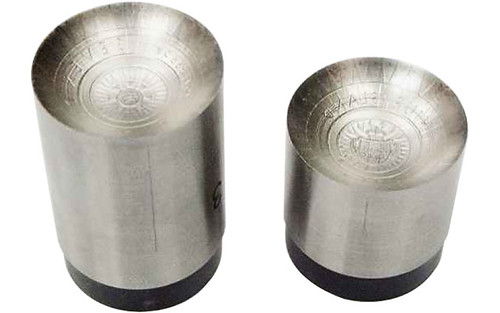
PREV ARTICLE
NEXT ARTICLE
FULL ISSUE
PREV FULL ISSUE
MINT OF POLAND STRIKES SPHERICAL COINAn article by Jeff Starck published February 23, 2015 in Coin World describes the challenges the Mint of Poland faced in
striking an unusual spherical coin. Here's an excerpt. -Editor
The Mint of Poland has unveiled new technology allowing for the creation of spherical (globe-shaped) coins. The technology was announced in a presentation Jan. 29 during the technical forum preceding the World Money Fair in Berlin Siemowit Kalukiewicz, the chief operating officer of the Mint of Poland, unveiled the 2015 Seven New Wonders of the World 7-ounce .999 fine silver $7 coin during the forum. This commemorative coin was struck by the Mint of Poland, which issued it in the name of Niue Island, a territory of New Zealand. The coin features a design based on the 1638 hand-drawn world map Nova totius terrarum orbis geographica ac hydrographica tabula created by eminent Dutch cartographer Willem Janszoon Blaeu. The map is in the collection of the Boston Public Library. To create a spherical coin, the Mint of Poland first prepared and evaluated a three-dimensional-model of the coin using Delcam’s modelling software ArtCAM. To assure the coin’s ideal spherical shape and map the images, engineers created a special six-piece die setup, with hammer (top) and anvil (bottom) dies joined with four collar dies on the sides.  According to Kalukiewicz, mint technicians first used blank dies to strike test examples in copper. Then technicians struck copper and silver test strikes with dies bearing designs, learning that perfectly round blanks would not result in perfectly round coins. The planchets were given a slightly raised, ridged area at the upper pole. This was necessary so the globular shape remained intact when the hammer die struck the planchet. It allowed the metal to flow just where the mint technicians needed it, to produce the spherical shape of the final product. Kalukiewicz said it required 13 hours to laser-engrave each of the four pieces of the collar (for a total of 52 hours) used in striking this revolutionary new coin, and dozens of hours were needed to laser-engrave the hammer and anvil dies. Two strikes from the press were needed, the first strike using 600 kilonewtons of force and the second strike using 650 kilonewtons of force. To read the complete article, see: Wayne Homren, Editor The Numismatic Bibliomania Society is a non-profit organization promoting numismatic literature. See our web site at coinbooks.org. To submit items for publication in The E-Sylum, write to the Editor at this address: whomren@gmail.com To subscribe go to: https://my.binhost.com/lists/listinfo/esylum All Rights Reserved. NBS Home Page Contact the NBS webmaster 
|
